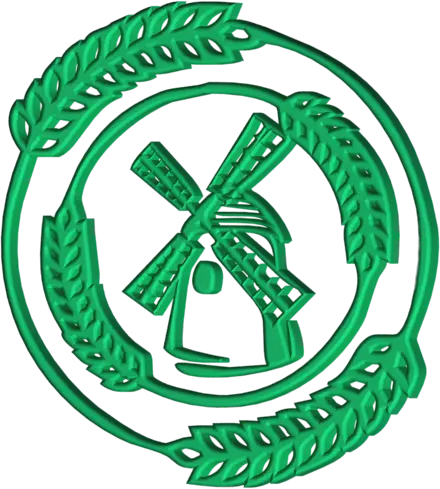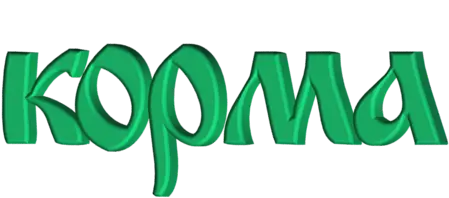Horses –
are graceful and freedom-loving animals. In the wild, they travel long distances in search of green pastures and clear waters. Even domesticated horses are quite demanding on the conditions of detention and the quality of food, so their breeding is not the easiest thing to do. It is extremely important to make a diet taking into account all the parameters of the pet, suach as age, weight, breed, level of physical activity and the purpose of its cultivation.Лошади —
грациозные и свободолюбивые животные. В дикой природе они преодолевают большие расстояния в поисках зеленых пастбищ и чистых водоемов. Даже одомашненные скакуны довольно требовательны к условиям содержания и качеству корма, поэтому их разведение не самое простое занятие. Крайне важно составить рацион с учетом всех параметров питомца: возраста, веса, породы, уровня физической активности и цели ее выращивания.*information is advisory
What is horse food? Feed types
Do not assume that the diet of a wild horse, consisting of almost 100% fresh greens, is suitable for domesticated individuals. Not at all. Greens, of course, are wonderful food, with a lot of vitamins, but with little nutritional value. Therefore, in the wild, animals spend about twenty hours a day eating it. A domesticated individual does not have so much time for this. And its loads are many times higher than wild relatives. Therefore, the diet should be formulated so that the nutritional value is high enough to cover the daily stress. But not too much to
prevent obesity. In addition, the portion should be small, because the volume of the stomach in relation to the body is quite small.
Products included in the diet of horses, according to their structure and nutritional level, can be divided into groups:
- juicy
- rough
- concentrates


Juicy
This group includes plants with a high degree of moisture. Sometimes the amount of liquid in them can reach 80%. Typically, such products can boast a large list of vitamins in their composition.
They include:- Green herbs: clover, nettle, quinoa, burdock, moss, dandelion, couch grass, milk thistle, chamomile and others. Plants growing near water acquire a more pleasant taste. In the same group are medicinal herbs: vaccinium, wild geranium and reeds, tenacious bedstraw, alfalfa, sweet verbena, rush, sorrel and others. Not all of them are present in the daily diet, some are added to it sometimes.
- Vegetables: carrots, pumpkin, fodder beets, cabbage and boiled potatoes. Beets and cabbage can cause bloating, so give them carefully. Boiled potatoes – only together with other products, as part of a mash, for example.
- Fruits: apples, tangerines, oranges, grapes, bananas, fodder watermelon and melon. Apples are a favorite treat, but you should not give them in large quantities, they can cause bloating. Citrus fruits are given infrequently and little by little, a fruit that is quite aggressive for digestion. Some banana horses will only eat the skin, so if you have a horse like this, remember to rinse it well before serving. Watermelons for horses are the icing on the cake – juicy, fresh, sweet. Although some individuals eat only peels from them.
- Silage is a crushed mixture of various plants that is infused in certain ways to retain nutrients and stimulate the production of lactic acid. Contains a lot of protein and a lot of vitamins.
Rough
This category includes foods that have a rough structure and require some effort from the digestive tract to digest them. They include: haylage, hay, straw, and sometimes cereals are also included here. Yes, indeed, cereals have a coarse structure, but they also have a high degree of nutrition, so we carried them to the next item.- Haylage — is a mixture of various herbs that are dried until the amount of moisture in them is reduced by half, and then hermetically preserved. It can be called an intermediate product between fresh herbs and hay. Haylage has a relatively high level of vitamin content in the composition, and retains up to 75% of the benefits of fresh herbs.
- Hay — is the dried leaves and stems of herbaceous plants. The degree of nutritional value depends on the plants included in its composition and storage conditions.
- Straw — is the dry stalks of legumes, cereals and other plants left over from the threshing process. This product has a rather low nutritional value, so it performs a quantitative rather than a qualitative nction in the feed. Simply put, it is added to food for satiety.
Concentrates
This group includes foods that are highly nutritious. Without them, the use of horses in the races and as a labor force would be almost impossible. Since it is they who make a small portion nutritious so that its energy is enough for a long working period.
They include:- Cereals: wheat, barley, oats, millet, corn, peas and others. They have a high level of nutrition due to the content of carbohydrates, fats, proteins, vitamins and fiber.
- Compound feeds — are mixtures of different ingredients. Their nutritional level is always high, but the list of useful elements can vary from a complete diet to one component, depending on the type of feed (complete, concentrate, PVS, premixes). This is a good option for those who cannot or want to spend time buying and preparing food on their own, but want to buy ready-made horse feed.
In Russian horse feed, a variety such as concentrate is most often added. Its small volume contains a large amount of nutrients. These are mainly amino acids, vitamins and minerals. Therefore, it cannot be used as an independent feed, only as an additive to the main diet.
Compound feed for birds and animals
Feed mix for animals
Feed for dairy cows
Compound feed for piglets from 61 to 120 days
Compound feed for adult rabbits
Compound feed for lambs up to 4 months
Compound feed for nutria






